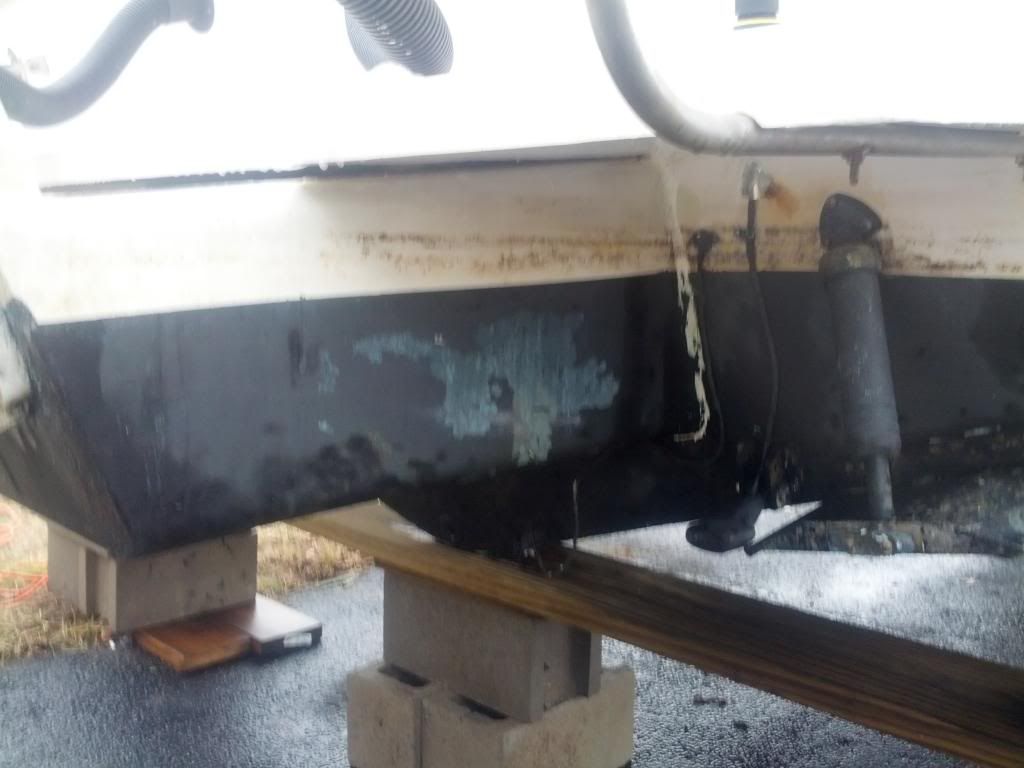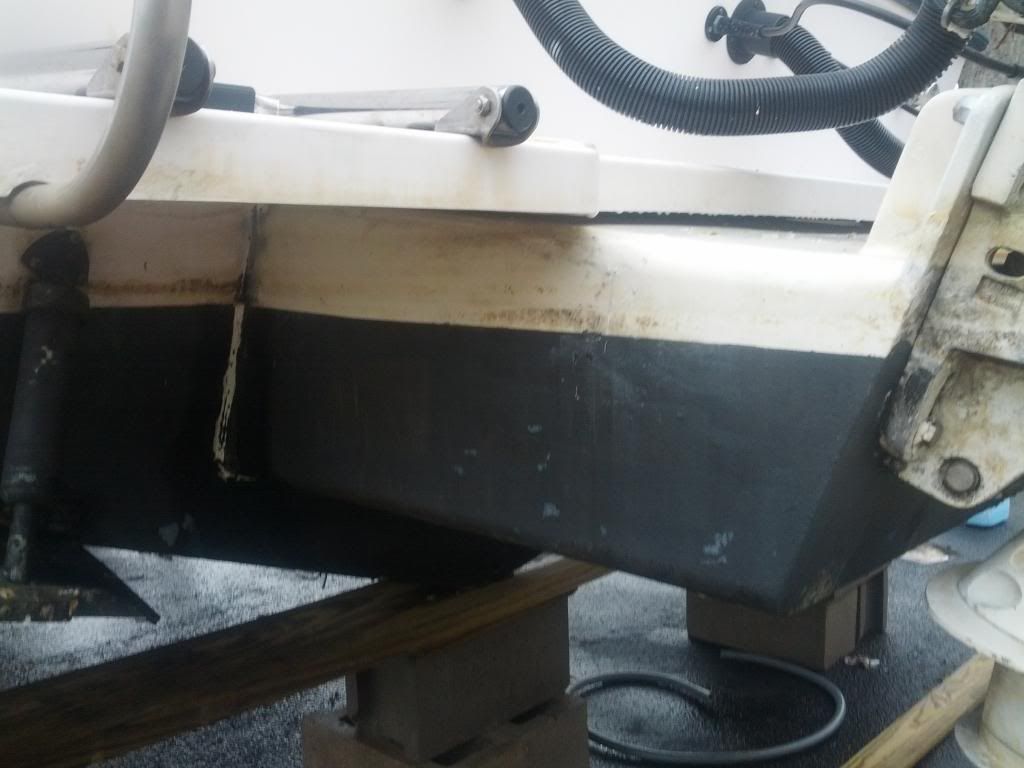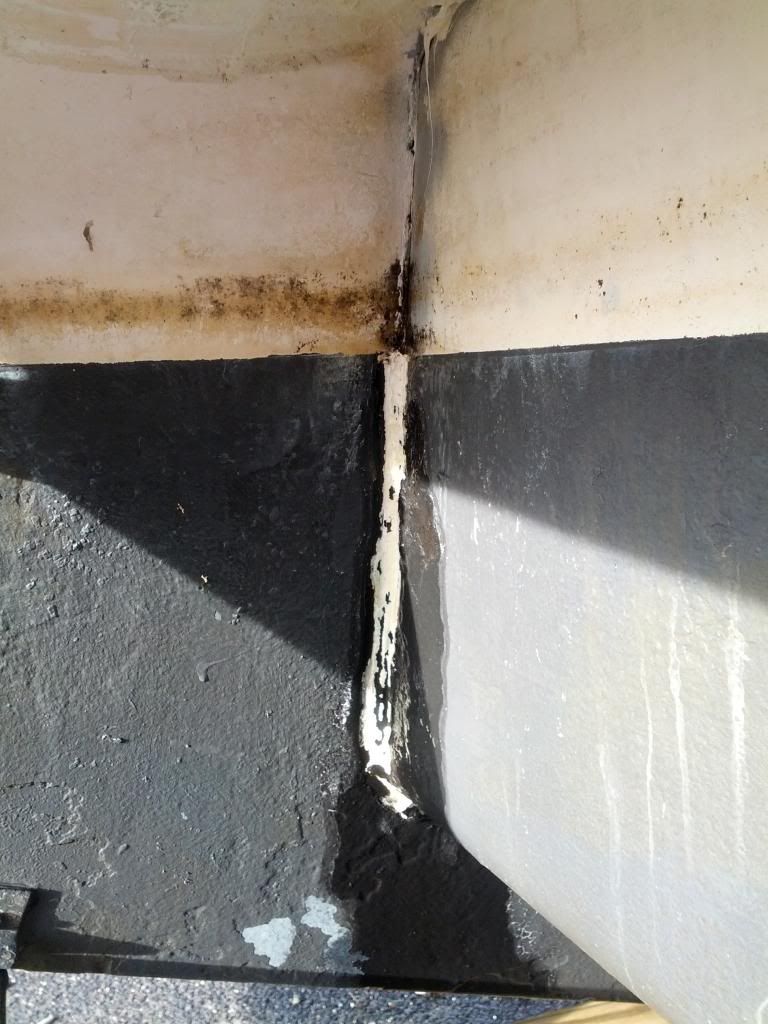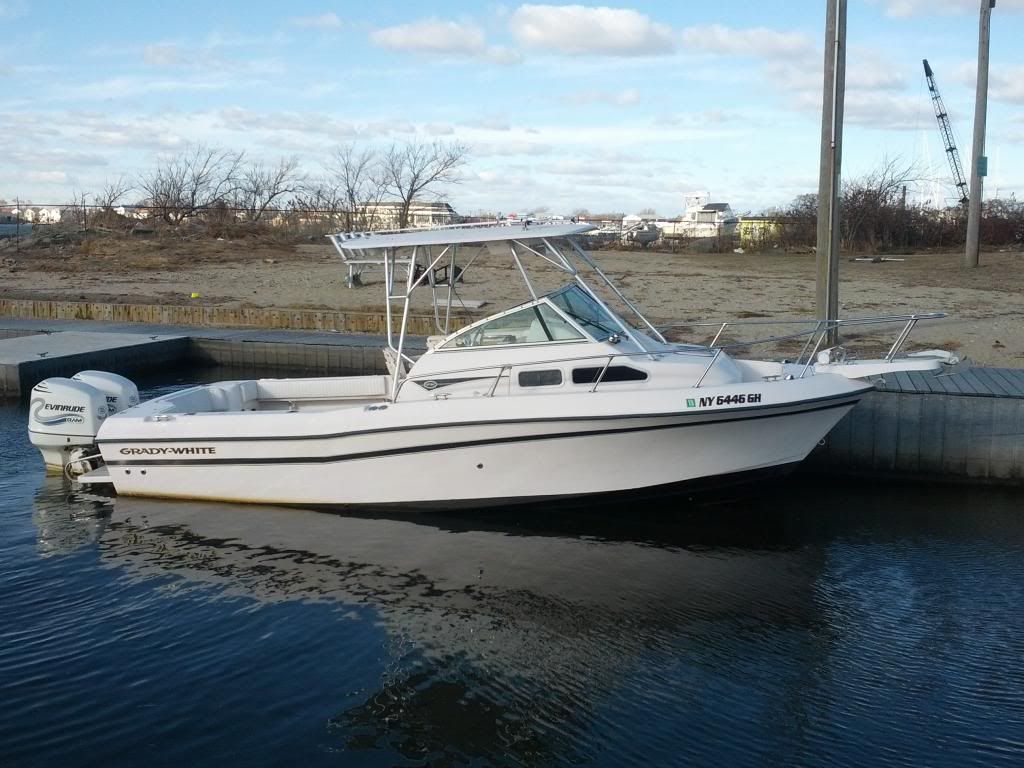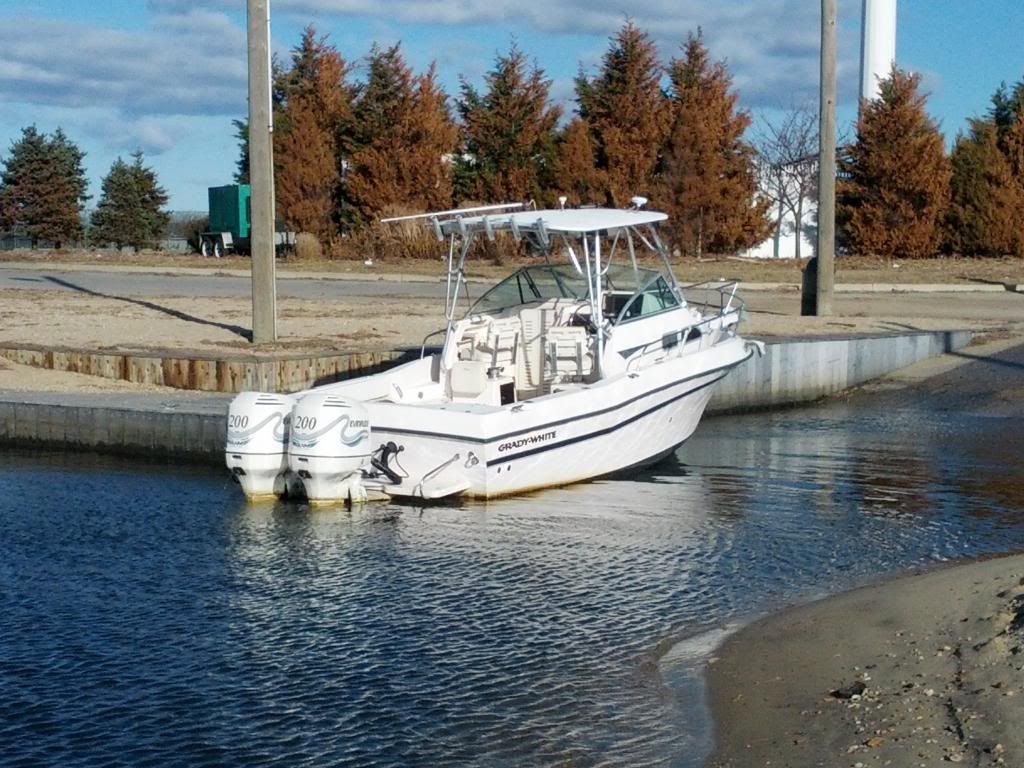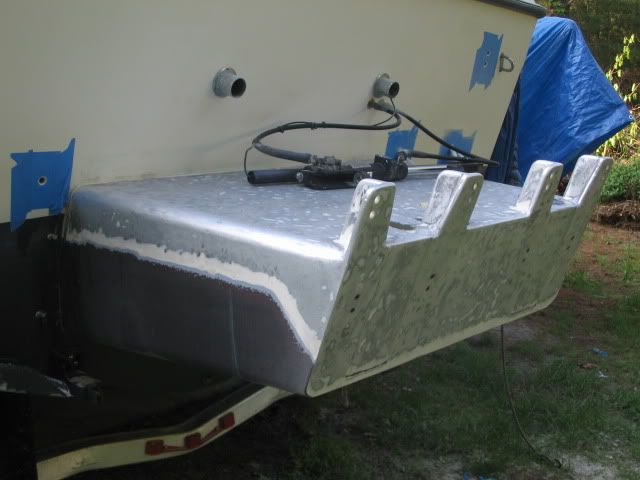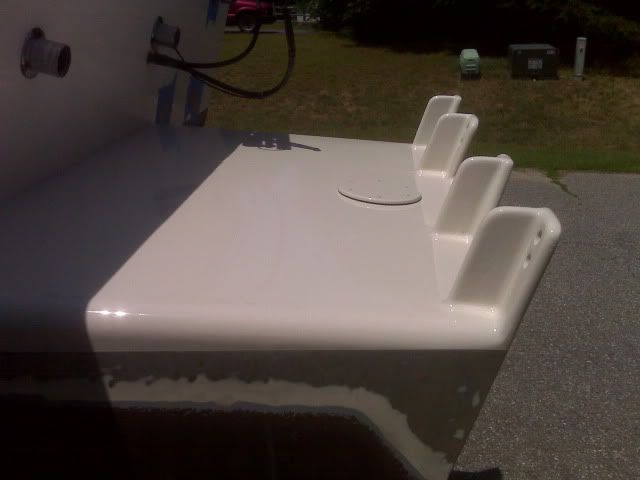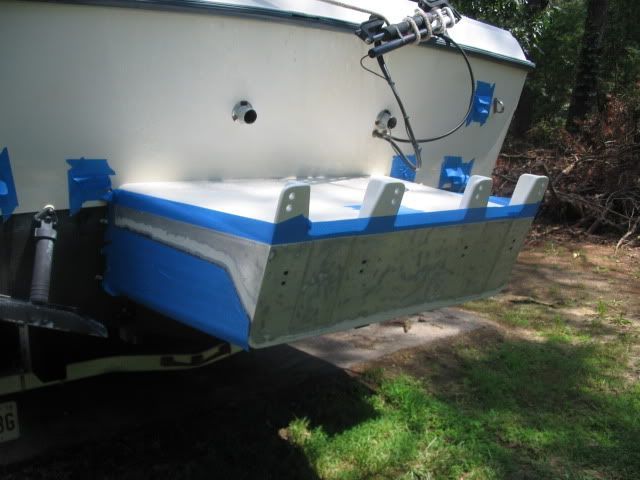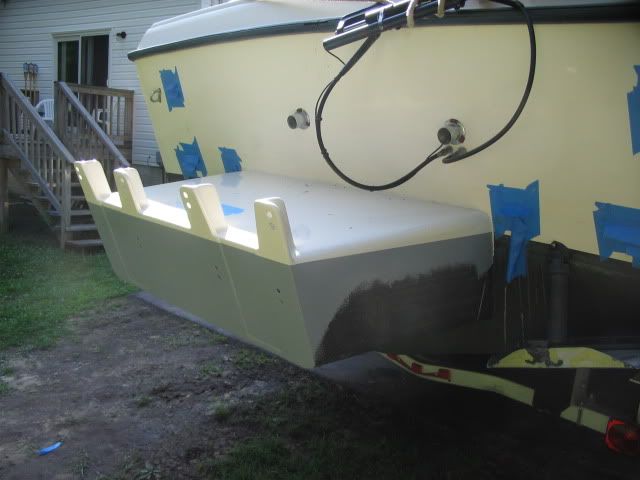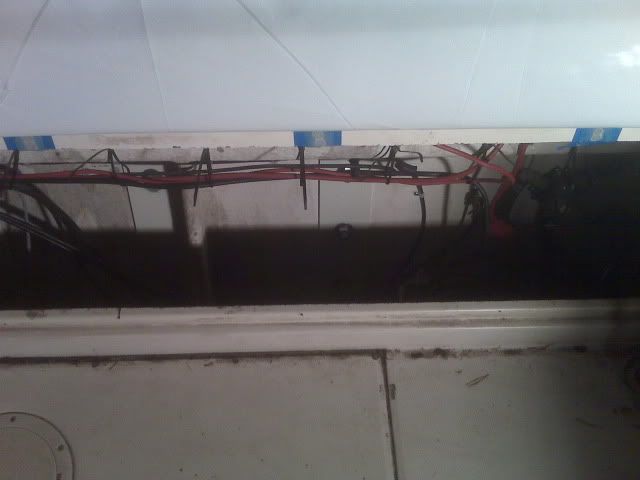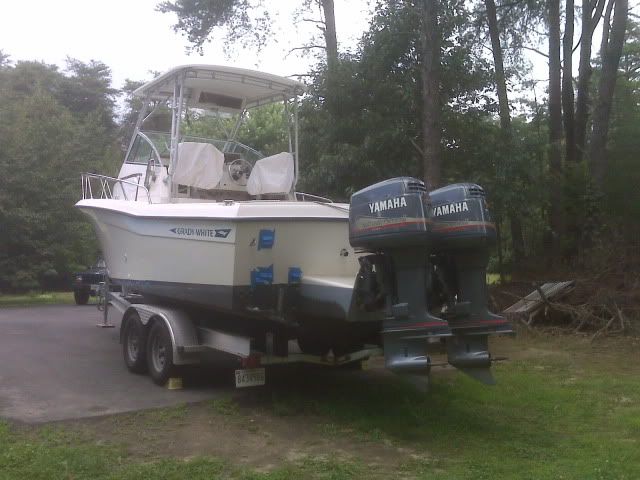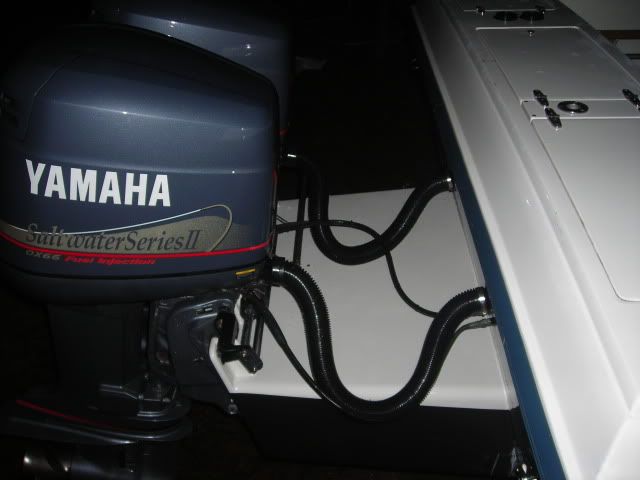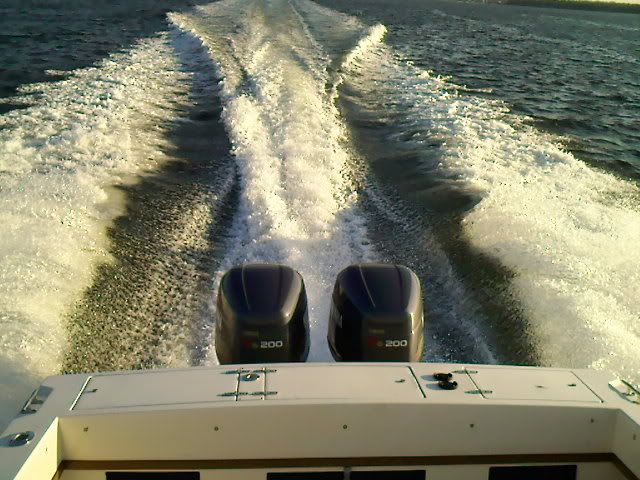As an alternative to costly engine removal, removing bracket, recoating, reversing back, and aluminum is a precious metal these days, be it costly in time and/or $$:
After you find out where it leaks, you can also fill it with water to the brim and see where it leaks out if not the plates on top, lower engine bolts, drain plugs, or anode bolt threading
Powercoat is very hard and thick, but when it looses adhesion it does it spot by spot and taking a putty knife especially upside down on bottom is a like attempting to hold the tide back in the Hudson River. Sandpaper against it is another one challenged against the mighty powdercoat.
I have discovered the angle grinder works incredibly well against the powdercoat - an even match ! Just be sure to wear goggles and cover all skin. Keep others away projectiles will fly. Nastly smell as well. Gouging is easy, no need to lean into it. I'd suggest you get it all off in one shot, otherwise every year you will be repeating the process until it is all gone, or perhaps one year do half, the next year remainder.
Once you get the aluminum clear, follow instructions on cans for metal coastings. Below water line I use primer covered by bottompaint, above I use epoxycoat and the like.
If you find galvanic damage has eaten through the metal or turned it into swiss cheese (the same) - replace bracket. Failure to maintain anodes is the cause perhaps accelerated by bottom paint use not for metals (NO COPPER ON ALUMIMUN).
For seam against hull all around, you can use lifecaulk with a wide spoon to form an outer seal over original seal, make sure gap is cleaned out and surfaces properly prepared first.
i have to admit bottom paints for metals (NO COPPER) are noticably not as good as the ones I use on fiberglass so I stil get marine growth unlike rest of hull.
Not to forget, no dissimilar metal drain plugs either. Open drain plugs every year, if a little water comes out, so what, just monitor it year to year for increasing amounts. My foam blocked OEM Springfield bracket holds approx. 12 gallons of water when filled to brim. Might get out a pint or so annually.
